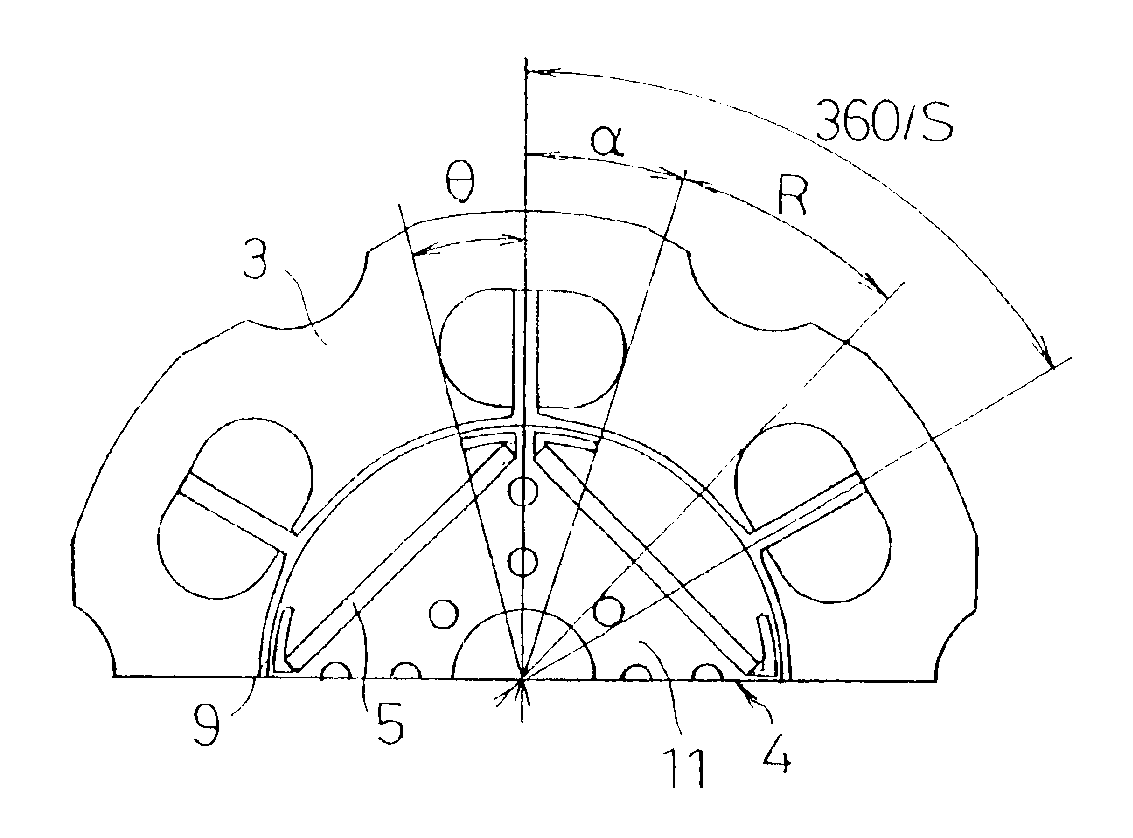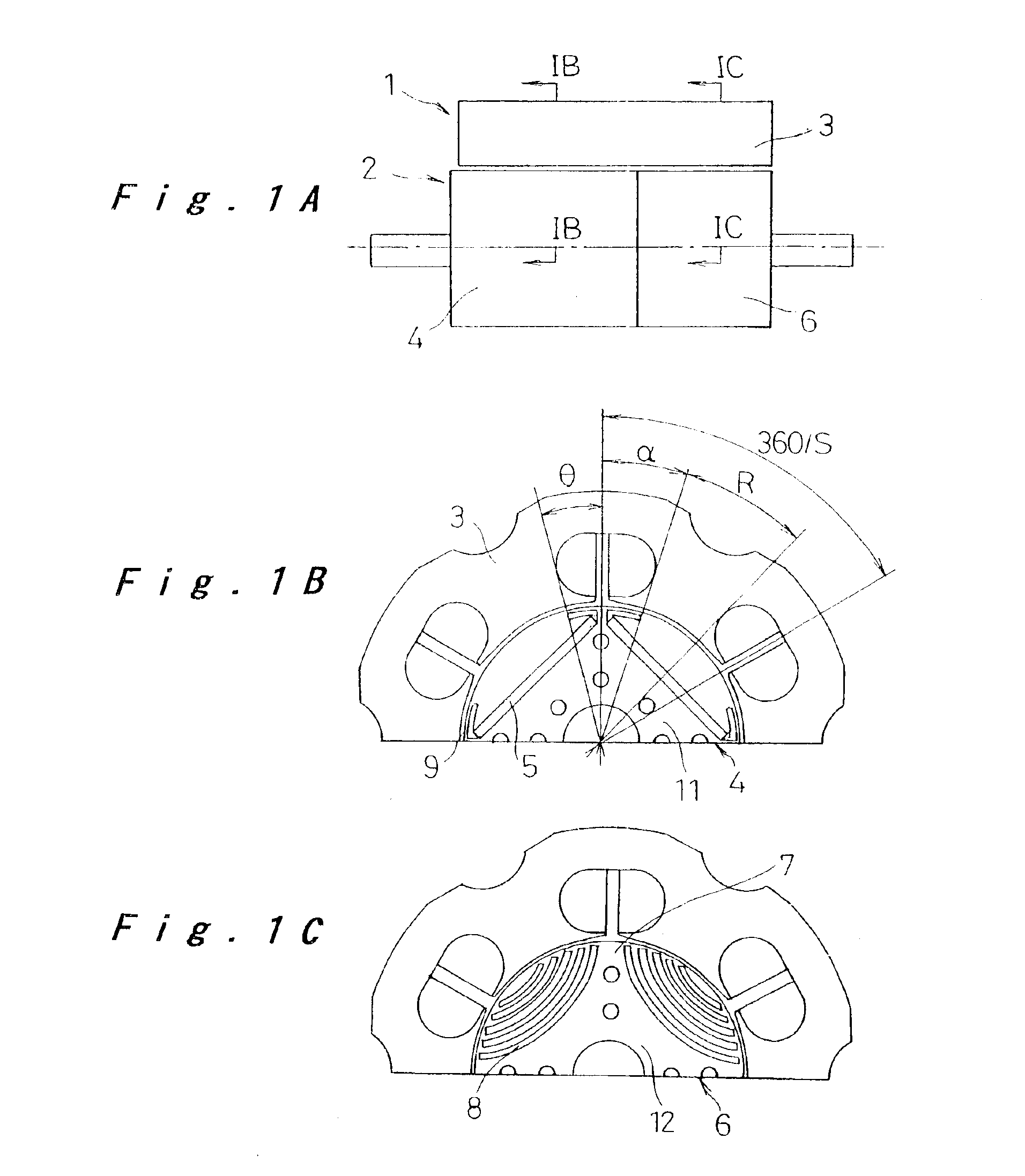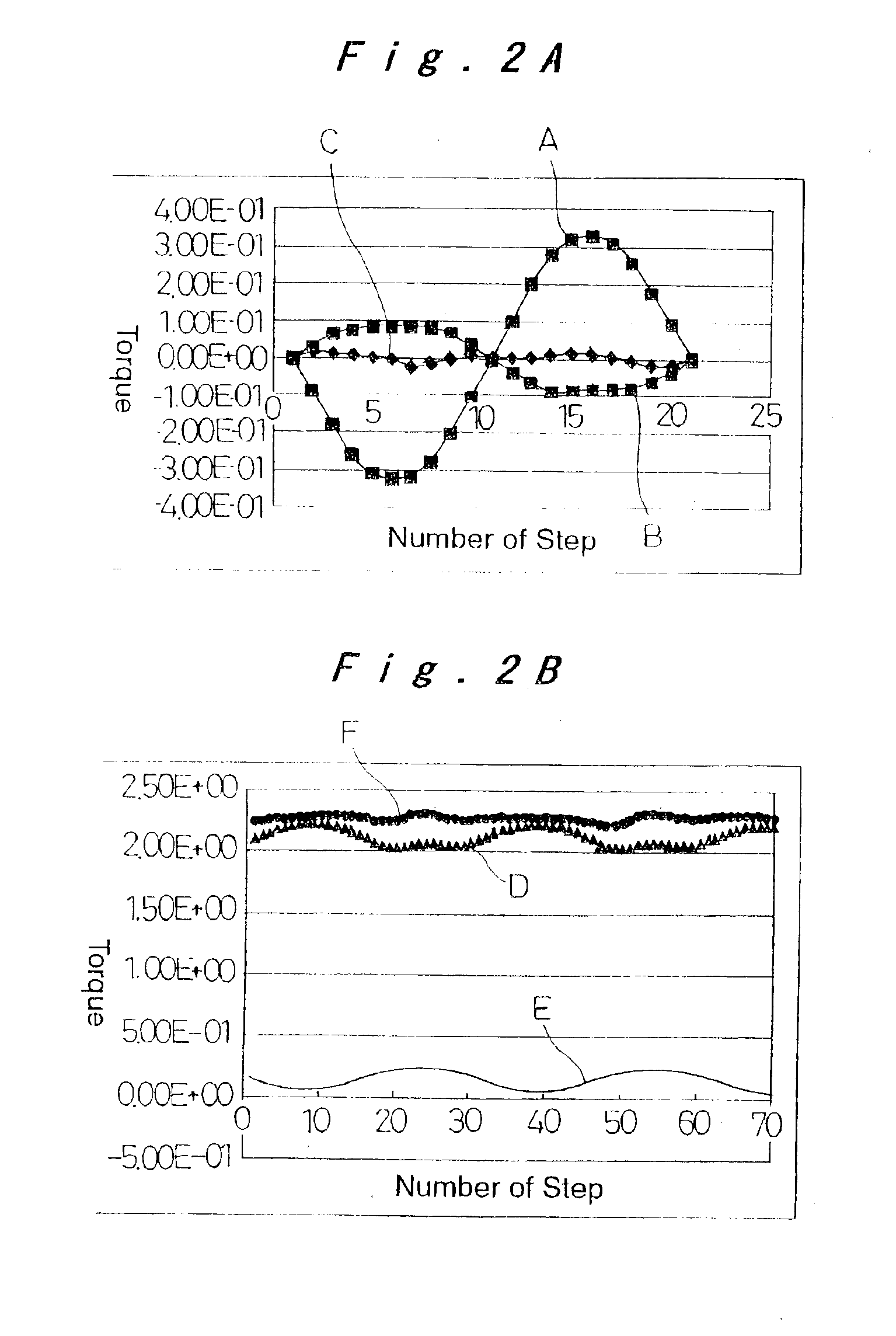Motor
a technology of motors and motors, applied in the field of motors, can solve the problems of increasing deteriorating characteristics, and inability to prevent the motor from being deteriorated in characteristics, so as to reduce noise and vibration, increase the size and cost of the motor, and improve the flexibility of design
- Summary
- Abstract
- Description
- Claims
- Application Information
AI Technical Summary
Benefits of technology
Problems solved by technology
Method used
Image
Examples
first embodiment
[0038]Hereinafter, a motor according to the present invention will be explained below with reference to FIGS. 1A through 2B. The entire configuration of the motor is substantially the same as that of the motor described with reference to FIG. 12, and only the main portion of the invention will be described.
[0039]FIG. 1A shows a rotor 2 and part of a stator 3 of the motor 1. The rotor 2 of the motor 1 includes a permanent magnet type rotor unit 4 shown in FIG. 1B and a reluctance type rotor unit 6 shown in FIG. 1C. The permanent magnet type rotor unit 4 is configured to have permanent magnets 5, such as four (2n, n=2) rare-earth magnets or ferrite magnets, embedded in a rotor core 11 that has rotor-core electromagnetic steel sheets punched into a generally circular shape and stacked on top of one another. The permanent magnets 5 are arranged so as to alternate between the N and S poles along the circumferential direction.
[0040]Elongated holes 9 are arranged within a predetermined ran...
second embodiment
[0049]Now, the present invention will be described with reference to FIGS. 3 to 5H. In the following description of the embodiment, the same components as those of the previous embodiment will not be described again but only those characteristic parts will be described.
[0050]In the present embodiment, as shown in FIG. 3, the permanent magnet type rotor unit 4 and the reluctance type rotor unit 6 have a shaft hole 20 into which a rotating shaft (not shown) for connecting the rotor 2 to exterior is fitted. In order to fix the rotating shaft to the permanent magnet type rotor unit 4 and the reluctance type rotor unit 6, a plurality of keyways 21 are formed in either one or both of the shaft holes 20 in the permanent magnet type rotor unit 4 and the reluctance type rotor unit 6. The plurality of keyways 21 are formed at angle deviations δ of 0°, δ1, δ2, and δ3 (δ1 23) with respect to reference lines drawn at intervals of 180° in electric angle (in the present embodiment, at intervals of...
third embodiment
[0054]Now, the present invention will be described with reference to FIG. 6.
[0055]In this embodiment, a clearance g2 between the reluctance type rotor unit 6 and the stator 3 is made smaller than a clearance g1 between the permanent magnet type rotor unit 4 and the stator 3.
[0056]According to the present embodiment, the permanent magnet type rotor unit 4 which undergoes higher centrifugal distortion due to the provision of the permanent magnets 5 is given the greater clearance g1. Consequently, the permanent magnet type rotor unit 4 and the reluctance type rotor unit 6 are made equal in the limit of rotation speed, thereby allowing higher rotation speed. Since the clearance g1 of the permanent magnet type rotor unit 4 has a small influence on torque characteristics and the clearance g2 of the reluctance type rotor unit 6 has a great influence on the torque characteristics, the reluctance type rotor unit 6 exercises a significant effect of improving the torque characteristics. The re...
PUM
 Login to View More
Login to View More Abstract
Description
Claims
Application Information
 Login to View More
Login to View More - R&D
- Intellectual Property
- Life Sciences
- Materials
- Tech Scout
- Unparalleled Data Quality
- Higher Quality Content
- 60% Fewer Hallucinations
Browse by: Latest US Patents, China's latest patents, Technical Efficacy Thesaurus, Application Domain, Technology Topic, Popular Technical Reports.
© 2025 PatSnap. All rights reserved.Legal|Privacy policy|Modern Slavery Act Transparency Statement|Sitemap|About US| Contact US: help@patsnap.com



